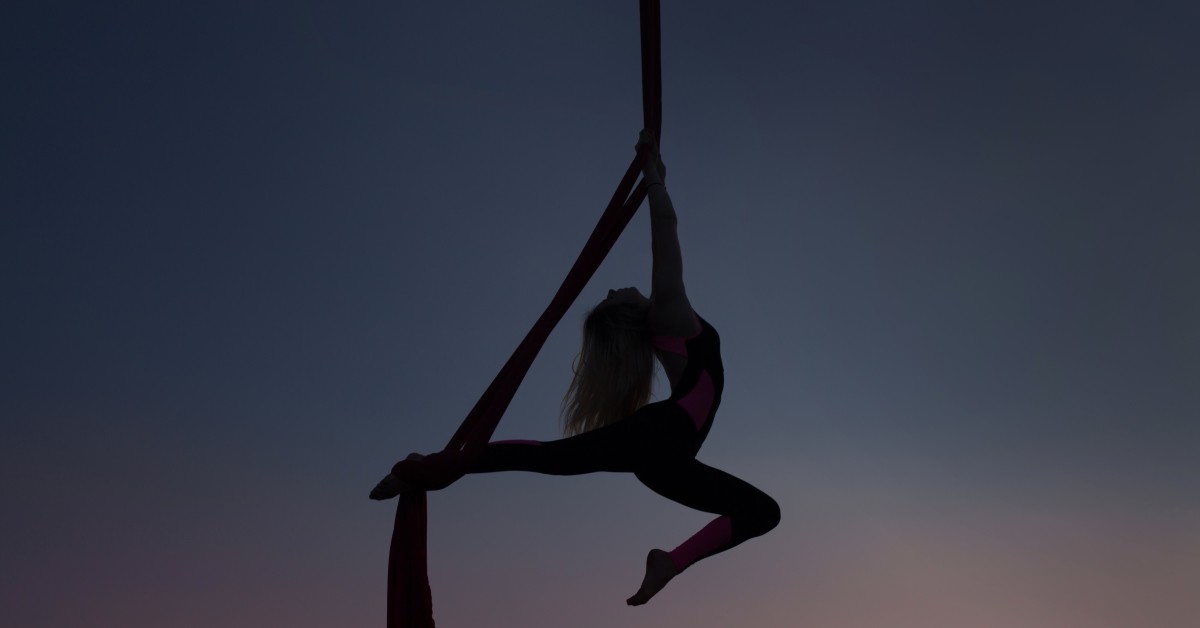TOP RATED LOCAL® DANCE STUDIO
History of Acrobatics

If you’ve ever attended a circus, chances are, one of your favorite parts is the acrobats. It is truly amazing to watch what these artists can with their bodies, from twists and turns to holds and flips. Kids want to grow up and be just like them, and adults wish they could do those moves, too.
K2 Dance Studios offers the best kids’ dance classes in Corona, including acrobatic classes. We offer dance classes for kids of all ages from 12 months and older. Our instructors have been dancing since they were young. We offer a strict, yet caring and positive approach to our kids’ classes. Our mission is to build kids up and support them in their goals, both for dance and for life. Below, we’ll explore the history of acrobatics. Contact us to enroll today!
HISTORY OF ACROBATICS
Acrobatics is the art of tumbling, jumping, balancing, and using items such as a trapeze and trampoline to entertain crowds around the world. The word is an ancient Greek word that means “walk on tiptoe, or strut.” Being that this is an ancient Greek word, that should tell you that acrobatics have been around longer than you would have thought. In fact, acrobatics appears in most ancient cultures, with the first proof of acrobatics found on ancient Greek Minoan art that dates back to 2000 BC. The Minoans practiced the art of performing acrobatic feats on the backs of bulls. Archaeologists have found ancient Greek vases with acrobats on them as well.
In ancient China, we know that acrobats existed since the Tang Dynasty in 203 BC. Acrobatics was incorporated as part of celebrations, festivals, and dances.
During the Middle Ages, acrobats would travel around, along with troubadours and storytellers, to castles of the nobles and perform as entertainment. Juggling was often featured as well as simple gymnastics moves on the floor. As tastes became more sophisticated, more stunts were added, as well as apparatuses. Now, acrobatics has become extremely specialized, with some people specializing in one skill. For example, there are contortionists who can twist their bodies into odd positions, tightrope walkers who walk on thin lines in unusual locations, and trapeze artists who perform stunts on trapeze. Aerial skills are also growing in popularity as these skills are a bit easier to learn.
Acrobatics requires quick reactions, accurate timing, physical strength, and a type of fearlessness. That being said, learning acrobatics starts at the fundamental level with safety being paramount. Every move requires planning and spotters are always present when needed. From learning how to fall safely to working together with others, acrobatics is a skill that takes years to master.
ACROBATICS AT K2 DANCE STUDIOS IN CORONA
Acrobatics offers valuable skills for dance students. It teaches the importance of flexibility as well as strength and helps in all dance classes, from ballet to jazz and competitive dance. When performing dance routines, having acrobatic skills can come in handy for choreography, as back flips always impress!
At our dance studio we start with the very basics, such as learning straight and extended hand stands, the pike position, straddle position, and the tuck position. We teach acrobatic skills in a progressive order, from the easiest to the hardest. While a lot of these positions are extremely challenging to our young dance students, their confidence will be built along with mastery.
K2 Dance Studios offers kids’ dance classes in a very supportive environment. We want our students to not only learn the fundamentals, but to also have fun doing so. We invite you to try one of our kids’ dance classes, including our acrobatics class, for free. Call us today to get started!

